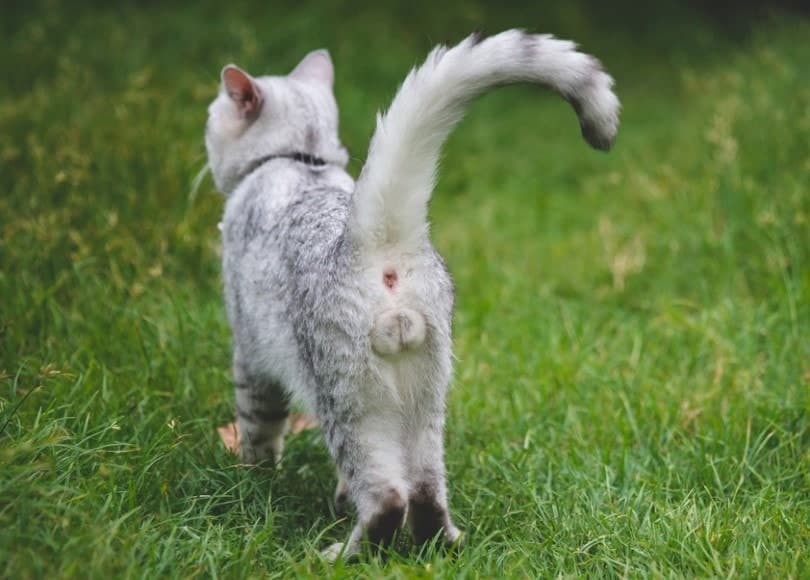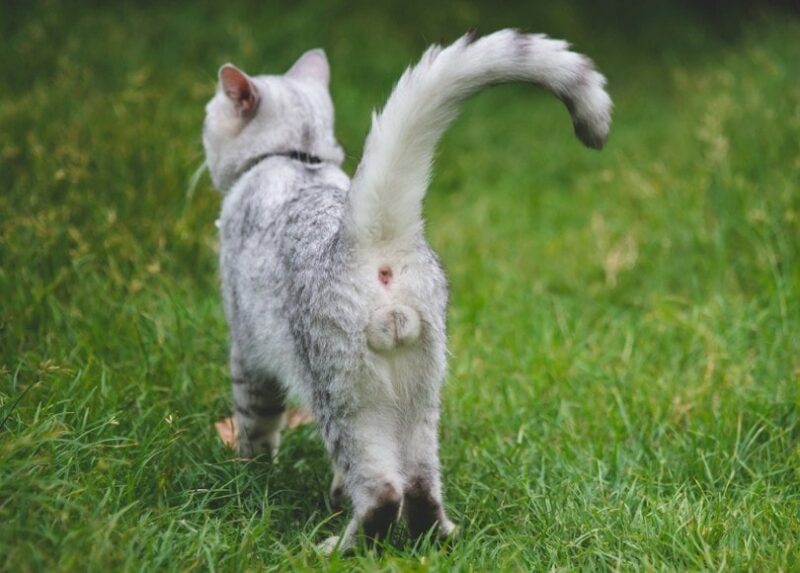Cats are generally experts at cleaning themselves, butts included. But sometimes, your feline pal needs a little extra help in the hygiene department. Cleaning a cat’s butt is mildly unpleasant and can also be a health risk, so ensure you follow all the right steps.
If someone tries to tell you that caring for a cat is not like caring for a kid, show them this article. No one really wants to clean anybody’s butt but their own, but here we are.

Do I Need to Clean My Cat’s Butt?
Many prefer cats over dogs because they love how independent they are, especially with their vigilant hygiene routines. You won’t have to do much cat butt cleaning; your cat will handle this by themselves. However, there are times when they can get extra dirty, and they may not want to clean themselves or are unable to do so. For example:
- Diarrhea causes a mess, and they don’t want to lick it. You’ll need to clean it up yourself to avoid them rubbing it all over your carpet! Note: scooting on the carpet can also be a sign of allergies, worms, or swollen anal glands.
- Fur matting can hold extra grime and dirt, which routine cleaning may not be able to remove.
- They can’t reach their butt. Elderly, injured, obese, or disabled cats may find difficulty in putting themselves into the correct position to reach their behind.
There are lots of pet shampoos to choose from, but some are much better than others. We love these two options by Hepper made with all-natural ingredients that gently clean your pet's skin and coat. These pH-balanced formulas contains moisturizing aloe vera and colloidal oatmeal, and it's free of dyes, phthalates, sulfates, and other irritants. At Catster, we’ve admired Hepper for many years and decided to take a controlling ownership interest so that we could benefit from the outstanding designs of this cool cat company!
How to Clean a Cat’s Butt
1. Suit Up
Even if you are only cleaning dirt, not feces, off your cat’s butt, you still need to act like you are cleaning up poop. Cat feces can contain toxoplasmosis, which can pose a risk to your health. Even if your cat is asymptomatic, they can be a carrier.
Wear gloves while cleaning your cat’s butt, and ensure you wash your hands very thoroughly afterward.
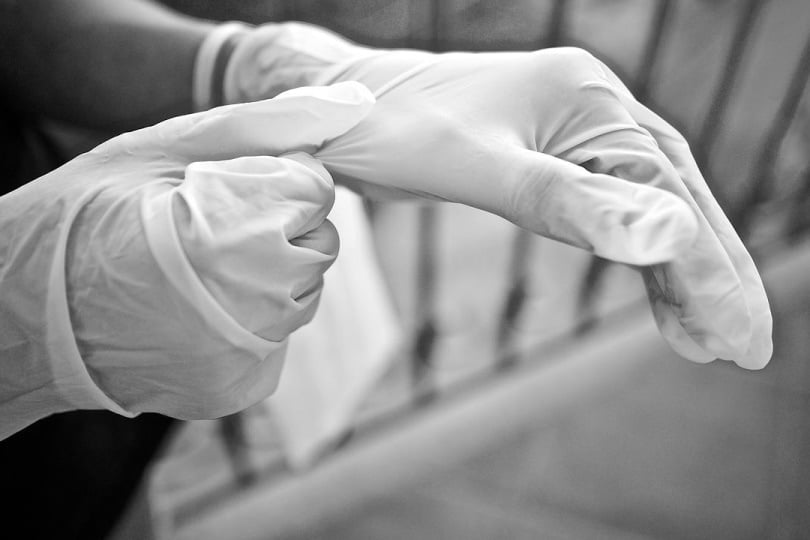
2. Strike at the Right Moment
Plan your butt-cleaning approach carefully. If you catch your cat while they are riled up from playing or are pumping with adrenaline from outdoor adventures, they may respond quite negatively.
This may best be done during a time they are calm and relaxed, such as after eating or an afternoon nap.
3. Restrain Them Safely
We recommend restraining your cat before cleaning if it will involve anything more than a quick sweep or two over the butt. Extended cleaning periods may not be received well, as you can probably imagine!
A physical restraint may be needed to hold your cat still and keep claws tucked safely away. You can also use emotional tactics to “mentally restrain” the cat by offering them lots of pats and their favorite treats. Be careful not to get scratched or bitten in the process.
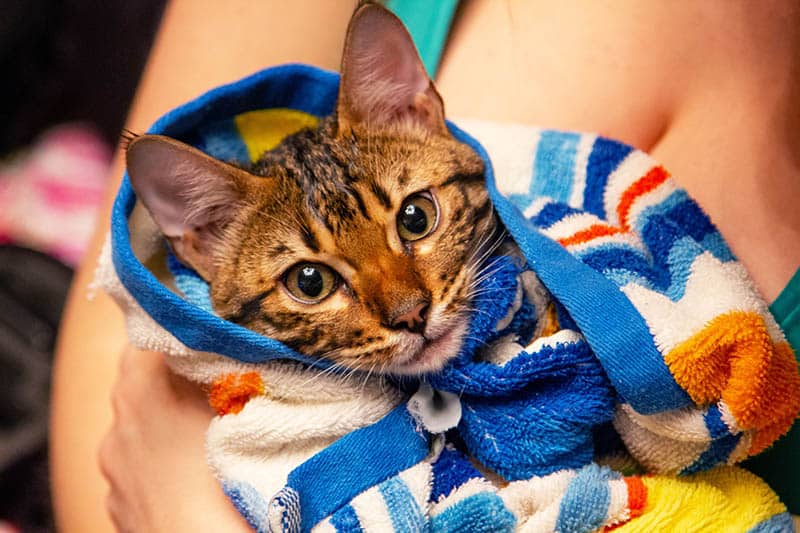
4. Wipe Away
Use a wet paper towel or damp, clean cloth to wipe their butt gently. You may need to lift the tail while you do so to see what you are doing. You can also use unscented baby wipes if you have nothing else available. Baby products are okay for cats’ skin as the pH of a baby’s skin is like a cat’s skin, so they won’t dry out their sensitive skin.
Alternatively, have some cat wipes handy. Dried dirt or feces may not be so easy to remove by simply wiping. In these cases, utilize a brush to try to shift stubborn grime. You might need to let it soak in the bath to loosen up before cleaning.
- Gentle Care For All Pets - Infused with moisturizing hypoallergenic ingredients & enriched with...
- Deep Cleans From Head to Tail - Tackle the toughest dirt & messes with our extra strong pet wipes...
- Freshness On The Go - Each dog grooming wipes pack contains 30 counts of premium dog wipes that...
Cleaning your cat's sensitive areas can be tricky, but high-quality wet wipes can make it much easier. Try a natural, hypoallergenic option like Hepper's Wash Wipes, made with moisturizing ingredients and specifically designed to gently clean your cat's skin and fur. These wipes are as convenient as they are effective!
At Catster, we’ve admired Hepper for many years and decided to take a controlling ownership interest so that we could benefit from the outstanding designs of this cool cat company!
5. Dry the Area
Lastly, you should dry the area after washing it, especially if a bath is involved. Leaving it wet can attract more bacteria and cause further irritation to an area they may already feel uncomfortable. Use a towel to dry the area—not a hairdryer.
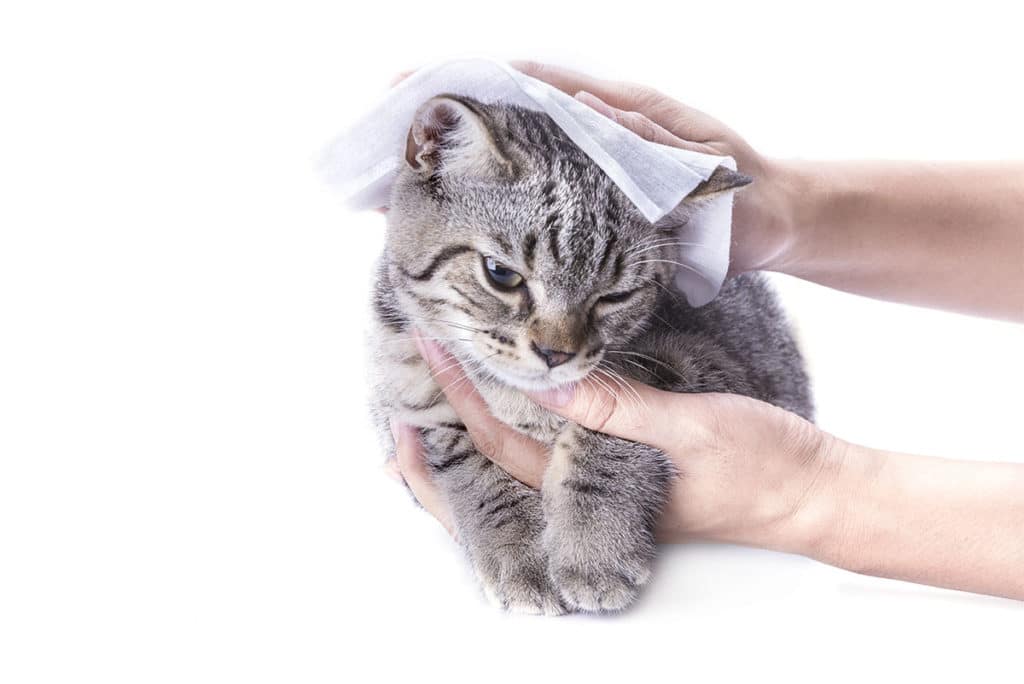
Why Is My Cat’s Butt So Dirty?
They Can’t Clean It Themselves
We’ve all seen the incredible positions cats contort themselves into to clean their behinds. While it may seem effortless to them, some cats simply cannot move in these ways. For example, cats that might not be able to clean their butts themselves are often:
- Elderly
- Injured
- Recovering from surgery
- Obese
- Disabled
- Arthritic
They Need Grooming
Fluffy cats can have a lot of extra fur to clean than their short-haired counterparts. They may simply not be able to get around all their fur, and their butt gets neglected. A regular professional groom can make an enormous difference for certain breeds and coats.
If the butt is the only problem area, your groomer may recommend a “sanitary cut,” that focuses on removing fur around the butt.
They Have Diarrhea
Healthy, solid poop will come easily from your cat and leave no trace for them to clean up. Alternatively, soft stools can be a messier ordeal by leaving residue on the butt and surrounding fur. Diarrhea can be a sign of a wide array of issues, and some of the most common include:
- Illness or disease
- Worms
- Toxins
- Ingestion of a foreign object
- Food intolerances
If your cat has ongoing or unexplained diarrhea, you should see a vet as soon as possible. Persistent diarrhea can cause dehydration.
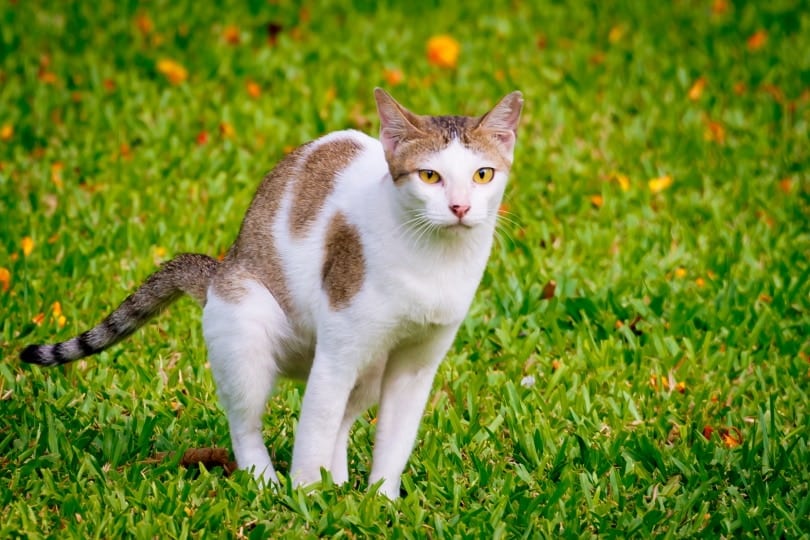
The Litter Box Is Too Small
If your cat regularly poops in the litter box, they could emerge with a grubbier bum than they went in with. This can be due to limited space within the box, which causes the butt to touch the feces (new or old.)
If the litter box has a few poops in it, it can also cause a dirty butt. To prevent this, you can clean the litter box often and make sure it is an appropriate size for your cat.
Final Thoughts
Often, a cat’s dirty butt is an infrequent occurrence, and having to clean it yourself is not very pleasant but still a necessity. Knowing how to do so effectively and quickly is the key to a stress-free experience. If you find you need to clean your cat’s butt all the time, investigate the reasons why. Vet treatment or assistance from a professional groomer might help reduce the frequency.
Related reads:
- Why Do Cats Smell Other Cats Butts? Cat Behavior and Communication
- 9 Best Cat Grooming Gloves – Reviews & Top Picks
Featured Image Credit: ANURAK PONGPATIMET, Shutterstock

